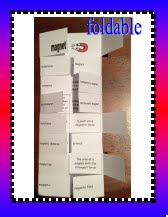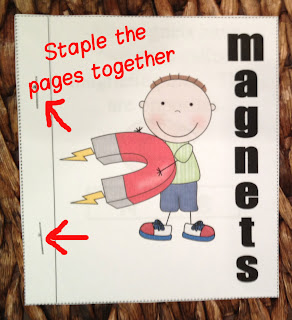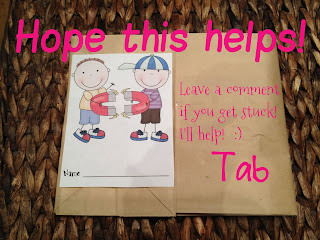Just finished our magnets unit! Check out some of our experiments and activities:
Most are quick and easy!
Horseshoe War! We battle these horseshoe magnets to be sure students understand the difference between not attracting and repelling! Like poles will repel-- Magnets and wood do not attract or repel!
See My earlier post for pictures, directions and teaching tips/tools for how to make a temporary magnet!
Trick Magnets
Head to your nearest Dollar Tree!
$1 for a set of these super cool trick magnets! They amaze the kids when they attract through your hand. Hide one on the back of your clipboard, and just start sliding it around. Shh... as they notice the other magnet magically sliding around, they grin!
Floating Paperclip!
See this post for a super exciting, quick and very little work experiment on magnetic field!
Magnet Race
Review attract and repel by putting colored stickers on the poles of your magnets, so students can identify north and north and south and south. Use one magnet to repel-without touching- the other magnet to the opposite side of the tray! First one there is the Winner! Get too close to the magnet's pair? They will attract and you have to start over! The race is on! Place cards beside the tray that read "attract" and "repel" so the kiddos know to use these words as they are describing the experience! They hardly know they are learning!
Floating magnets!
Don't have this display model?
Stick a pencil through several ceramic magnets with their like poles facing. They float! Students do a great job of explaining why this happens! Review magnetic field by pulling the magnets away from each other? Why do they no longer repel or attract?
Magnetic Field Models
Worth every penny! Buy these! I've tried pouring iron filings onto a glass picture frame--- What a mess! These little kits are super easy for clean up and are safe for the kids to use themselves. Hand them two magnets and have them describe how attract looks different from repel! Why????
Compass!
Draw a map... you know some triangle mountains, snake like rivers and Christmas trees. Slap a winding path through the middle and discuss what happens when a hiker gets lost. How do you find your way out? Why would a compass be helpful? What does a magnet do to a compass? What does a large iron object do to a compass? How does it work? Great activator!
Attract/Won't Attract Experiment
Place various items in tubs and allow students to test them. I always put different types of metals in mine! It throws them off every time! Especially the penny! Try an aluminum can!
Recording sheet is FREE at my TpT store!
How to Make an Electromagnet:
materials- copper wire, nail, 9 volt battery
Coil the wire around the nail like this and hold the other end to the terminals of the battery. It won't be very strong, but it will certainly attract a few spent staples- just enough to AMAZE the kids!
For me, experiments catch their attention, but they need the vocabulary in print! Check out my word wall words, vocabulary matching sets, dominoes for vocabulary.
Vocabulary review with these awesome, kid friendly foldables (available at my TpT Store)
Check out my TpT store, Tab Purvis, for my vocabulary bundle, review game and most popular- magnets minibook!
Happy Experimenting!
Tab




















































